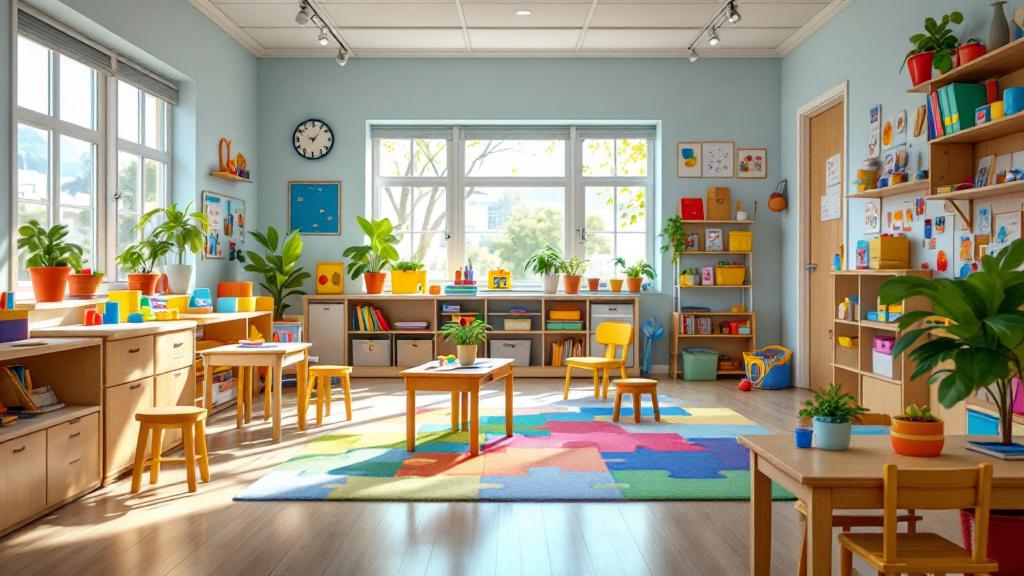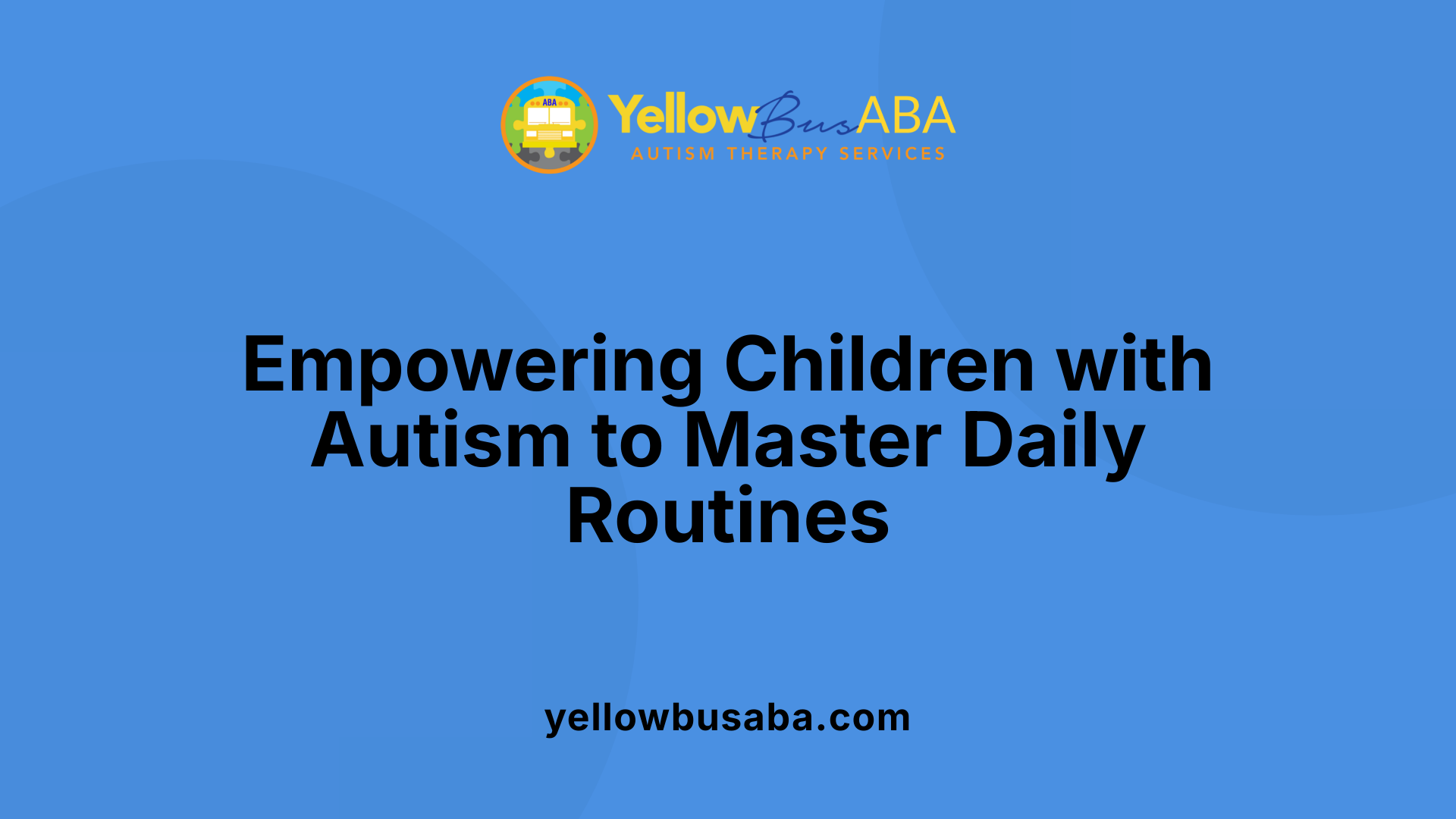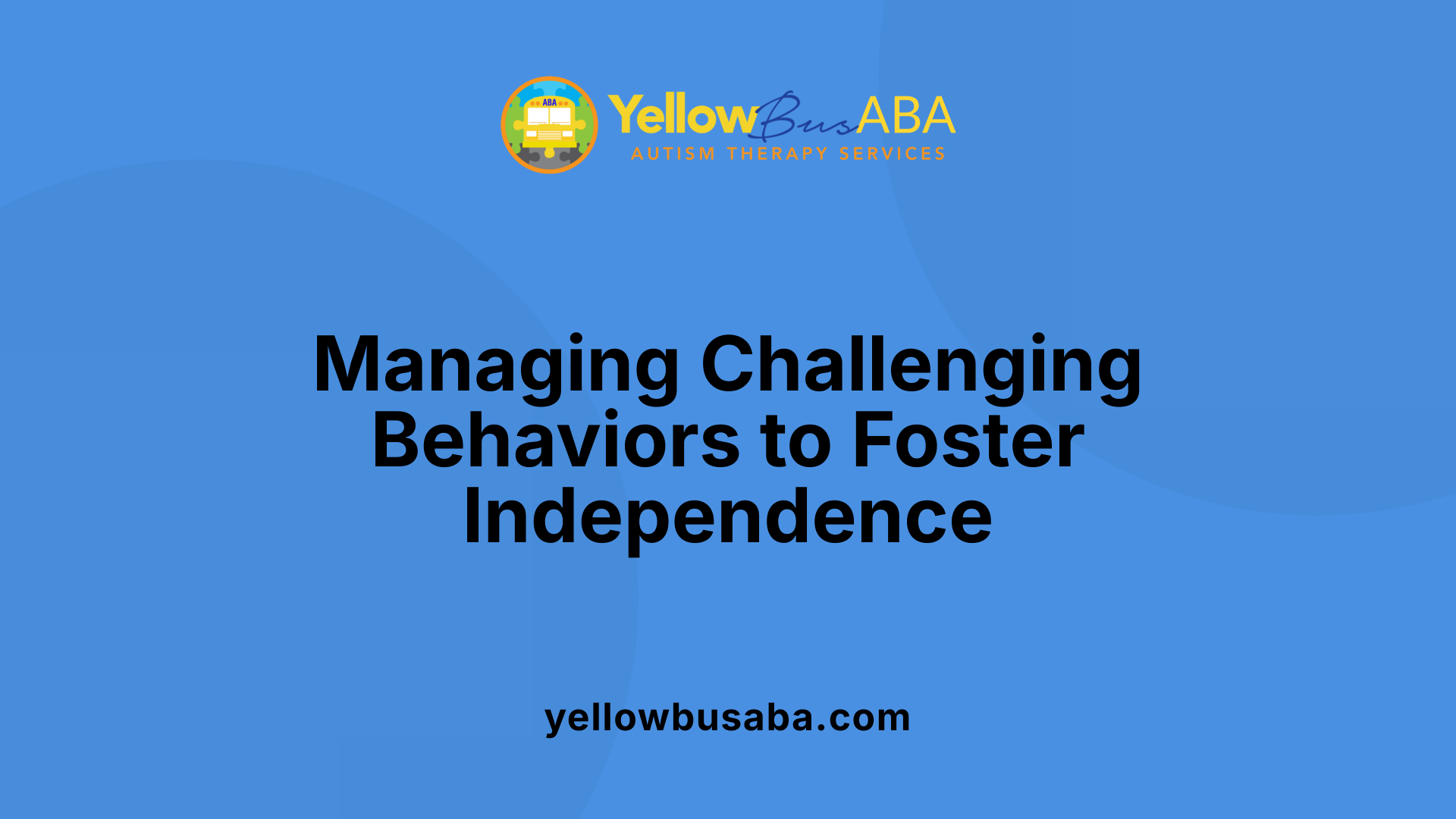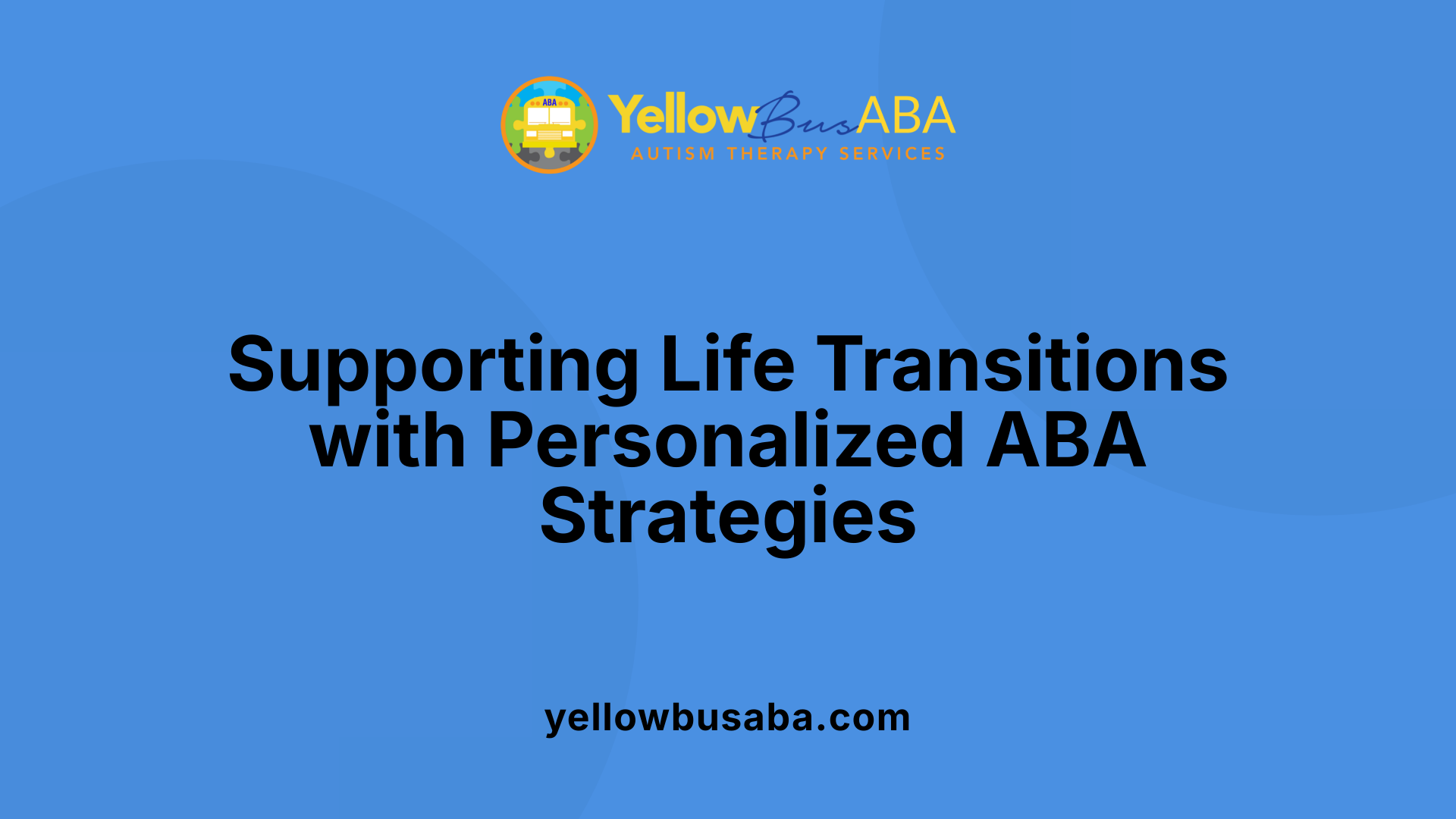How ABA Therapy Can Help Children with Autism Achieve Independence in Everyday Life
July 15, 2025
Empowering Children with Autism Through Structured, Evidence-Based Interventions

Unlocking Independence with ABA Therapy
Applied Behavior Analysis (ABA) therapy is a cornerstone intervention for children with autism, providing a structured and personalized approach to developing essential skills for greater independence in daily life. Its evidence-based strategies help children navigate routines, improve communication, and build social and self-care skills, ultimately enhancing their quality of life. This article explores how ABA therapy actively supports children with autism in achieving autonomy and confidence across various settings.
Understanding the Foundations of ABA Therapy

What is ABA therapy?
Applied Behavior Analysis (ABA) therapy is a scientifically supported intervention designed to improve behaviors and skills in individuals with Autism Spectrum Disorder (ASD). It focuses on understanding and modifying behavior through systematic teaching methods to promote independence and enhance quality of life.
Core principles of structured, evidence-based interventions
ABA therapy revolves around structured, step-by-step teaching approaches that are personalized for each individual. It employs techniques such as task analysis, reinforcement, visual schedules, and behavioral interventions. Data collection plays a crucial role in tracking progress and adjusting strategies accordingly. The therapy emphasizes positive reinforcement, where desired behaviors are rewarded to encourage their repetition.
Goals of ABA therapy in supporting independence
One of the main aims of ABA therapy is to foster independence across various areas of daily life. This includes teaching essential routines like hygiene, dressing, meal preparation, and household tasks. The therapy also enhances communication skills and social interactions, helping individuals better navigate their environments. Many intervention strategies are designed to support children and teens in transitioning through different stages of development. For example, as children grow, ABA techniques evolve to include community involvement, vocational skills, and transition planning, ensuring preparedness for adulthood.
How ABA therapy uses behavior analysis to support skill development
ABA employs rigorous behavior analysis by observing behaviors and their environmental triggers. Therapists identify stimuli that reinforce certain actions and use this knowledge to encourage positive behaviors while reducing maladaptive ones.
Through interventions such as positive reinforcement, prompting, fading, and modeling, ABA helps establish new skills and strengthen existing ones. Data collection is integral, facilitating real-time adjustments to interventions based on individual progress.
Techniques and methods used in ABA therapy to teach essential life skills
ABA uses a variety of methods to impart vital skills:
| Technique | Description | Application Example |
|---|---|---|
| Positive Reinforcement | Rewards are given to increase the likelihood of desired behaviors. | Giving a child praise or a small reward after completing a task successfully. |
| Task Analysis | Complex skills are broken into smaller, manageable steps. | Teaching handwashing by sequentially completing each step. |
| Visual Supports | Pictures, schedules, or cues help in understanding and memory reinforcement. | Using picture cards for meal routines or daily schedules. |
| Discrete Trial Training (DTT) | Structured trials with clear instruction, prompt, response, and reinforcement. | Teaching a child to sort objects under guided trials. |
| Generalization Strategies | Techniques to ensure skills transfer to real-life environments. | Practicing communication skills in different settings like home and school. |
How behavior analysis supports skill development
Behavior analysis in ABA involves a meticulous process of understanding how environmental factors influence behaviors. By collecting data on responses, therapists identify effective reinforcers and triggers. This information guides tailored interventions that promote skill acquisition, social interaction, communication, and self-care. The goal is to create sustainable behavior changes that last beyond therapy sessions.
Final notes
ABA therapy is adaptable and individualized, making it suitable for people of all ages. It involves collaborative efforts among therapists, families, educators, and community members. By integrating strategies like community participation and transition planning, ABA helps individuals with ASD achieve greater independence and community involvement, enhancing their overall quality of life.
Teaching Daily Living Skills for Independence

How does ABA therapy assist children with autism in navigating daily activities?
ABA therapy plays a vital role in helping children with autism manage their daily routines more independently. It does so by teaching children to break down complex tasks into smaller, manageable steps. For example, a child learning personal hygiene routines will be guided through each step, such as brushing teeth, washing hands, or combing hair, with consistent encouragement and reinforcement for each successful attempt.
Visual routines and schedules are widely used in ABA therapy to reduce anxiety and create predictable patterns. These visual tools help children understand what to expect and transition smoothly from one activity to the next. Such strategies boost confidence and decrease resistance to routine changes.
In addition, ABA emphasizes teaching skills beyond basic routines, including managing money, completing household chores, and navigating social interactions. These skills are tailored to each child's strengths and challenges, ensuring the therapy is effective and relevant.
Overall, ABA provides a structured, supportive framework that encourages independence. It integrates positive reinforcement to motivate children, fostering not only practical skills but also boosting their confidence and ability to function autonomously in daily settings.
How does ABA therapy facilitate skill generalization across settings?
A fundamental goal of ABA therapy is that skills learned during therapy sessions are applied successfully in real-life situations, whether at home, school, or within the community. To achieve this, therapists intentionally practice skills in natural environments, encouraging children to adapt and respond in different contexts.
Caregivers and family members are actively involved in reinforcement strategies, helping to embed new behaviors into daily routines outside of therapy. Visual elements, such as schedules and prompts, serve as cues that support consistent behavior across various settings.
Furthermore, ABA incorporates community-based learning activities and vocational training, especially for teenagers, to prepare them for independent living and employment. Transition planning remains an important aspect, enabling skills to transfer seamlessly from structured therapy to everyday life.
By focusing on generalization, ABA therapy ensures that children and teens can independently utilize their acquired skills, making real-world independence attainable and sustainable.
Teaching routines and life skills in ABA therapy
In ABA therapy, teaching daily routines and life skills involves a step-by-step approach called task analysis. Each skill, like dressing or cooking, is broken into smaller actions. This segmentation makes learning more manageable and less overwhelming.
Positive reinforcement is a cornerstone, where children receive rewards or praise for completing steps correctly, encouraging repetition and mastery.
Visual aids, such as picture schedules or timers, support children in understanding sequences and managing transitions smoothly. Prompting and fading techniques are used to guide children initially and gradually reduce prompts as independence increases.
Caregivers are provided with strategies and tools to reinforce learning at home, creating a consistent environment that promotes skill retention and generalization.
Overall, ABA helps children develop the self-care, household, and social skills they need for daily life, boosting their confidence and ability to function independently.
Enhancing Communication and Social Skills

What methods are used in ABA therapy to improve communication and social skills?
ABA therapy employs a variety of techniques designed to boost communication and social interaction abilities. These include language acquisition strategies such as modeling and prompt fading, as well as non-verbal communication training like gestures, eye contact, and facial expressions. Social interaction exercises often involve role-playing, turn-taking activities, and reinforcement to encourage children to express themselves and interpret social cues.
Behavior analysts also utilize visual supports like picture exchange communication systems (PECS) and social stories to enhance understanding and usage of communication skills. These methods help children build confidence in expressing their needs and understanding others, which are essential for successful social engagement.
How does improving social interaction capabilities support independence?
Developing strong social interaction skills is a crucial factor in fostering independence in children with autism. When children learn to navigate peer relationships, participate in group activities, and communicate effectively, they are better equipped to function independently in various settings.
Enhanced social skills enable children to access community resources, build friendships, and collaborate in educational or recreational activities. This increased social competence promotes self-reliance and decision-making, empowering children to handle daily routines, manage challenges, and pursue personal interests confidently.
| Technique | Description | How It Supports Development |
|---|---|---|
| Modeling | Demonstrating desired behaviors | Builds understanding and imitation skills |
| Role-playing | Simulating social scenarios | Prepares children for real-world interactions |
| Reinforcement | Rewarding positive behaviors | Encourages repetition and confidence |
| Visual supports | Using pictures or schedules | Aids comprehension and independence |
Mastering communication and social skills through ABA creates a strong foundation for overall independence, greatly enhancing a child's ability to live, learn, and participate actively in their community.
Addressing Behavioral Challenges for Better Functioning

How does ABA therapy address challenging behaviors and support independence?
ABA therapy plays a crucial role in helping children with autism manage difficult behaviors. It begins by carefully observing and identifying triggers—specific environmental or contextual factors that lead to undesirable behaviors. Once these triggers are understood, therapists teach children alternative responses that are more appropriate and functional.
Techniques such as reinforcement, prompting, and behavior analysis underpin this process. Reinforcement involves rewarding positive behaviors to increase their occurrence, while prompting supports children in performing desired actions. Behavior analysis helps pinpoint the function of challenging behaviors, guiding personalized intervention strategies.
This approach not only reduces harmful behaviors but also focuses on teaching skills that foster independence. For example, children learn to manage their emotions, solve problems, and perform daily routines more effectively, enabling them to navigate everyday life with greater confidence.
What role does positive reinforcement play in promoting desired behaviors?
Positive reinforcement is a cornerstone of ABA therapy. It involves providing children with rewards—such as praise, tokens, or preferred activities—following desired behaviors. This encouragement makes it more likely that the behaviors will be repeated.
Through consistent practice, children begin to associate specific actions with positive outcomes, which reinforces their motivation to learn and perform new skills. Over time, this leads to lasting behavior change, increased confidence, and a sense of accomplishment.
By consistently applying reinforcement strategies, therapists and caregivers help children develop a wide range of skills—from communication and social interactions to self-care and daily routines. The focus on positive reinforcement not only promotes effective learning but also nurtures a positive attitude towards skill development.
Techniques and Strategies for Managing Behaviors
ABA employs multiple methods to address behavioral challenges and build independence:
| Technique | Description | Purpose |
|---|---|---|
| Discrete Trial Training (DTT) | Structured teaching with clear prompts and rewards | Skill acquisition, behavioral control |
| Pivotal Response Training (PRT) | Naturalistic teaching emphasizing motivation | Generalization of skills |
| Visual Schedules | Visual prompts outlining daily routines | Transition management |
| Task Analysis | Breaking complex tasks into smaller steps | Step-by-step learning |
| Positive Reinforcement | Rewards for desired behaviors | Encourages repeating behaviors |
This array of techniques ensures a tailored approach, addressing each child's unique needs and promoting sustainable growth.
How does ABA facilitate skill generalization across settings?
A primary goal of ABA therapy is skill transfer—ensuring that behaviors learned in therapy are applicable beyond the clinical setting. Therapists and families work together to practice skills in various environments such as home, school, and community.
Strategies include using visual aids, role-playing, and providing consistent reinforcement across locations. This consistency helps children understand that skills and behaviors are relevant and useful in different circumstances.
For example, a child might learn to communicate needs during therapy sessions and then apply those skills when shopping or at the playground. This transfer of learning increases independence and improves overall functioning.
How are families involved in reinforcing skills outside of therapy?
Family and caregiver involvement is vital to the success of ABA. Therapists coach families on how to implement strategies, manage routines, and reinforce behaviors consistently at home.
Tools such as visual schedules, reward systems, and easy-to-understand instructions help families integrate therapy principles into daily life. Regular communication and training sessions ensure that caregivers are confident and capable.
By supporting the child's learning in multiple environments, families help maximize skill retention and generalization, fostering independence and improving quality of life.
How does ABA therapy help individuals as they grow older?
ABA is adaptable for all ages, including adolescents and adults. As individuals transition into different life stages, therapy targets new skills like self-care, social interactions, vocational tasks, and community engagement.
For teens, ABA includes teaching practical skills such as cooking, managing money, using transportation, and employment readiness. Therapy plans are personalized based on ongoing assessments, ensuring continued progress.
Community involvement and vocational training are incorporated to prepare individuals for real-world experiences. These efforts promote independence, social participation, and a smoother transition to adult life.
This comprehensive approach in ABA therapy not only helps reduce challenging behaviors but also builds a foundation of skills that empower individuals with autism to live more independent, fulfilling lives.
Transition Planning and Support for Lifelong Independence

How does ABA therapy help children with autism transition to adolescence and adulthood?
ABA therapy plays a crucial role in guiding children with autism through various life stages, especially as they reach adolescence and adulthood. Its primary focus is on developing independence by teaching essential skills that are needed for daily living and social participation.
Therapists customize interventions to address each individual’s strengths and needs, helping them acquire practical skills such as communication, self-care, social interaction, and problem-solving. For teenagers, ABA incorporates vocational training and community-based learning, which prepare them for real-world environments, employment, and everyday responsibilities.
For example, teens learn how to manage money, navigate transportation systems, and perform household tasks independently. The therapy emphasizes breaking down complex skills into manageable steps, reinforcing them through positive techniques, and practicing skills in various settings. This comprehensive approach ensures that skills are transferable and sustainable, fostering confidence and long-term autonomy.
Overall, ABA supports a smooth transition into adult life by equipping individuals with the tools needed for independence and successful integration into their communities.
The Role of Families and Caregivers in Reinforcing Skills

How can families support independence through ABA?
Families play a vital role in reinforcing the skills learned through ABA therapy. They are encouraged to participate actively by engaging in caregiver training and coaching sessions provided by therapists. These sessions equip families with effective strategies to implement structured routines, use visual aids, and apply reinforcement techniques at home.
Implementing consistent routines helps children understand expectations and develop independence in daily activities. Visual schedules and task breakdowns serve as visual prompts that make routines clear and manageable.
Reinforcement strategies such as praise, rewards, and tokens encourage children to repeat desired behaviors. When families reinforce these behaviors regularly, the skills learned in therapy become more ingrained and transferable to real-life settings.
Why is family involvement crucial for successful ABA outcomes?
Family involvement is essential because it ensures that the progress achieved during therapy sessions is maintained and expanded upon outside the clinical environment. When caregivers are actively engaged, they can provide continuous reinforcement, which accelerates skill acquisition and retention.
Moreover, involvement helps children practice skills in familiar contexts, fostering better generalization across different settings such as home, school, and community.
Consistent support from families helps children become more independent, confident, and capable of applying essential skills in everyday life.
Strategies for Promoting Skill Generalization
To maximize the effectiveness of ABA, families are encouraged to employ strategies that promote the generalization of skills. These include:
- Repeating routines with slight variations to adapt to different contexts.
- Using diverse reinforcement methods to motivate ongoing development.
- Engaging in community activities that mirror the skills learned during therapy.
- Collaborating closely with therapists to review and adapt strategies as needed.
In sum, a collaborative approach involving families, caregivers, and therapists creates a supportive environment where children with ASD can thrive and gain independence in everyday life.
| Strategy | Description | Benefits |
|---|---|---|
| Caregiver training | Teaching parents and caregivers to implement therapy techniques | Consistent reinforcement, improved skill learning |
| Structured routines | Establishing daily routines with visual aids and prompts | Increased predictability, reduced anxiety |
| Reinforcement | Using praise and rewards to encourage desired behaviors | Motivation and skill retention |
| Skill generalization | Applying learned skills in various environments | Greater independence, real-world readiness |
| Community involvement | Participating in community activities for practical practice | Improved social skills, confidence |
By actively supporting skill development and generalization, families can significantly enhance the outcomes of ABA therapy, fostering greater independence and life success for individuals with ASD.
Evaluating Progress and Personalizing Interventions
How do therapists monitor progress and adjust ABA interventions?
Therapists employ detailed methods for tracking a child's development through continuous data collection. This involves recording observable behaviors, skills learned, and response to interventions during therapy sessions. Regular assessments help identify which strategies are effective and which need modification.
By analyzing this data, therapists can observe trends and measure improvements in essential areas such as communication, daily living skills, and social interaction. When progress is noted, interventions are maintained or refined; if expected gains are not observed, therapists adjust their approaches, incorporating new techniques or intensifying existing ones. This responsive process ensures that each child’s unique needs guide their therapeutic journey, maximizing growth in independence.
What role do assessments play in customizing ABA therapy?
Assessment is a fundamental part of designing an effective ABA program. It provides a comprehensive understanding of a child's current skills, strengths, and challenges. These evaluations include formal tools, observations, and input from families and caregivers.
The insights gained from assessments inform the development of personalized treatment plans. They help set realistic goals, determine the most suitable interventions, and prioritize skills that need reinforcement. Regular reassessment ensures that therapy remains aligned with the child's evolving abilities, leading to more efficient progress toward independence.
Strategies for measurement and personalization
| Technique | Description | Purpose |
|---|---|---|
| Data Collection | Ongoing recording of behaviors and skills | Monitor progress and inform adjustments |
| Progress Evaluation | Periodic reviews of collected data | Identify growth areas and challenges |
| Skill Assessment | Formal testing and observational assessments | Guide customization of goals and methods |
| Family and Caregiver Feedback | Input on behavior in natural environments | Ensure relevance and transferability |
How assessments influence treatment outcomes
| Aspect | Impact on Therapy | Example |
|---|---|---|
| Goal Setting | Clarifies priorities based on individual needs | Emphasizing communication or self-care |
| Intervention Choice | Selects effective strategies suited to strengths | Using modeling or prompting techniques |
| Progress Tracking | Ensures ongoing effectiveness of strategies | Adjusting reinforcement schedules |
| Generalization Efforts | Supports skill transfer across settings | Using community-based activities |
Assessment-driven approaches foster tailored interventions, enhancing skill acquisition and independence.
Final thoughts
Personalized ABA therapy relies heavily on continuous monitoring and assessment. This adaptive process not only ensures that interventions remain effective but also respects each child's unique developmental trajectory, ultimately supporting their journey toward greater independence and participation in daily life. Regular reassessment and strategic goal alignment empower children with autism to build essential skills confidently and sustainably.
Fostering Lifelong Independence
ABA therapy, with its evidence-based, individualized approach, offers children with autism the opportunity to develop vital life skills that foster independence, confidence, and active community participation. By focusing on core areas such as communication, daily routines, social skills, and behavioral management, ABA empowers children to navigate the complexities of everyday life and reach their full potential.
References
- ABA Therapy: Promoting Independence in Daily Life
- How ABA Therapy Helps with Daily Routines
- How Can ABA Therapy Help a Child With Autism? | UTBS
- How ABA Therapy Build Independences in Daily Routines
- ABA Therapy for Teens: Building Independence - Therapyland
- 6 Life-Changing Benefits of ABA Therapy for Children with Autism
- 8 Common Myths About ABA Therapy Debunked
- Autism Therapy Archives | Children's Autism Center
- Applied Behavior Analysis (ABA) | Autism Speaks
- Applied Behavioral Analysis (ABA) - Autism Speaks





.jpg)
